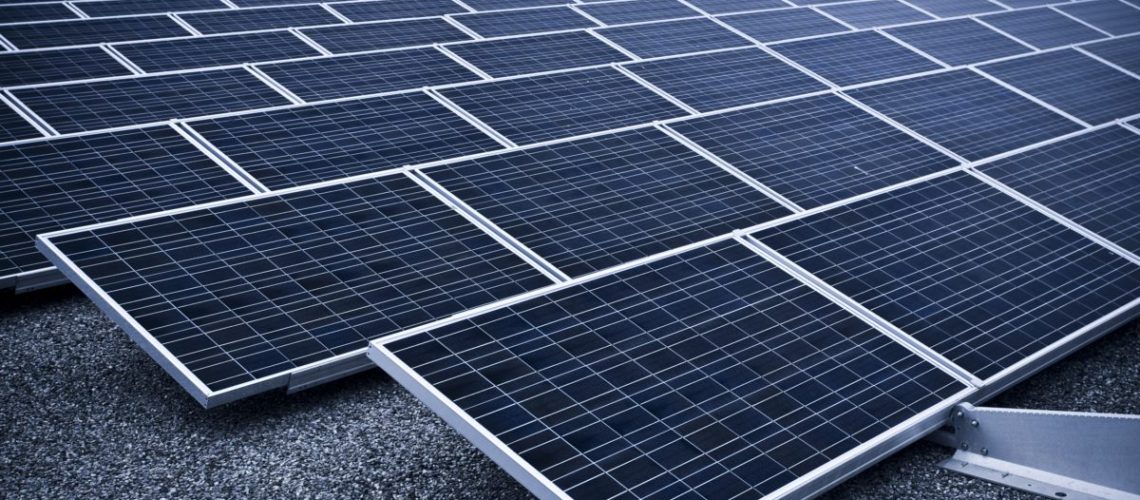Recycling solar panels keeps them out of landfills, but also provides much-needed raw materials with Rystad Energy projecting a value approaching $80 billion by 2050.
The question about what to do with solar panels at the end of their useful life is about to become moot as Rystad Energy analysis shows the incredible value of materials that can be extracted in the recycling process. Rystad estimates that recyclable materials from PV panels at the end of their lifespan will be worth more than $2.7 billion in 2030, up from only $170 million this year, and the value will approach $80 billion by 2050.
PV recycling is still in early stages, but it has been successfully implemented in Europe where the Waste Electrical and Electroni Equipment (WEEE) directive requires 85% collection and 80% recycling of the materials used in solar panels. In the US, California-based Solarcycle recently raised $6.6 million in growth funding to advance its solar recycling platform. Investors include some solar veterans such as SolarCity founders Peter and Lyndon Rive, and former CEO/CTO of Sunpower, Tom Dinwoodie.
Rystad projects that solar PV waste will grow to 27 million tonnes per annum by 2040, and they estimate that recovered materials from retired panels could make up 6% of solar investments by 2040, compared to only 0.08% today.
Not only is material recovery expected to be big business, but reclaiming the minerals will become increasingly necessary as the growing demand creates a short supply.
“Rising energy costs, improved recycling technology, and government regulations may pave the way for a market where more defunct solar panels are sent to recycling rather than the nearest landfill. Recycling PV panels can help operators save costs, overcome supply chain woes and increase the likelihood of countries meeting their solar capacity goals,” says Rystad Energy analyst Kristin
Based on the rate of installations in 2022 and assuming a 15-year lifespan for solar panels, Rystad looked at which regions and countries will benefit most from solar recycling in 2037. The findings showed that China will account for 40% of global installations this year, and when these panels mature in 15 years, the estimated recycling value will be $3.8 billion, out of a $9.6 billion global total. India will trail in second place with an estimated $800 million in value, followed by Japan with $200 million in estimated value. North America in 2037 is projected to be worth $1.5 billion, with Europe set to hold $1.4 billion.
The components in a solar panel with the highest value are aluminum, silver, copper and polysilicon. Silver accounts for about 0.05% of the total weight but makes up 14% of the material value, Rystad estimates. To recycle polysilicon requires an energy intensive process, which is why recycled polysilicon has a high price. Glass is not on the list of high value components because, while there’s a lot of it on solar panels, it has a low resale value.
Rystad estimates peak solar energy implementation in 2035 of 1.4 TW, by which time the recycling industry should be able to supply 8% of the polysilicon, 11% of the aluminum, 2% of the copper, and 21% of the silver needed by recycling solar panels installed in 2020 to meet the material demand. The result will be increased ROI for the solar industry, an enhanced supply chain for materials, as well as a reduction in the need for carbon intensive mining and refinery processes.
In September 2021, NREL scientists published research that describes how to motivate the market first to reuse solar panels, and then recycle them by guiding national industrial policy to create a financially viable end-of-life solar panel industry. The researchers’ projections showed that 40% of all solar panels could be reused and recycled using subsidies equal to $18 per panel for 12 years. The Rystad analysts point to the EU’s regulatory mechanisms for jumpstarting the recycling industry in Europe. And while policy can be a promote an industry, the economic potential of the solar recycling industry may be the greatest motivator.



